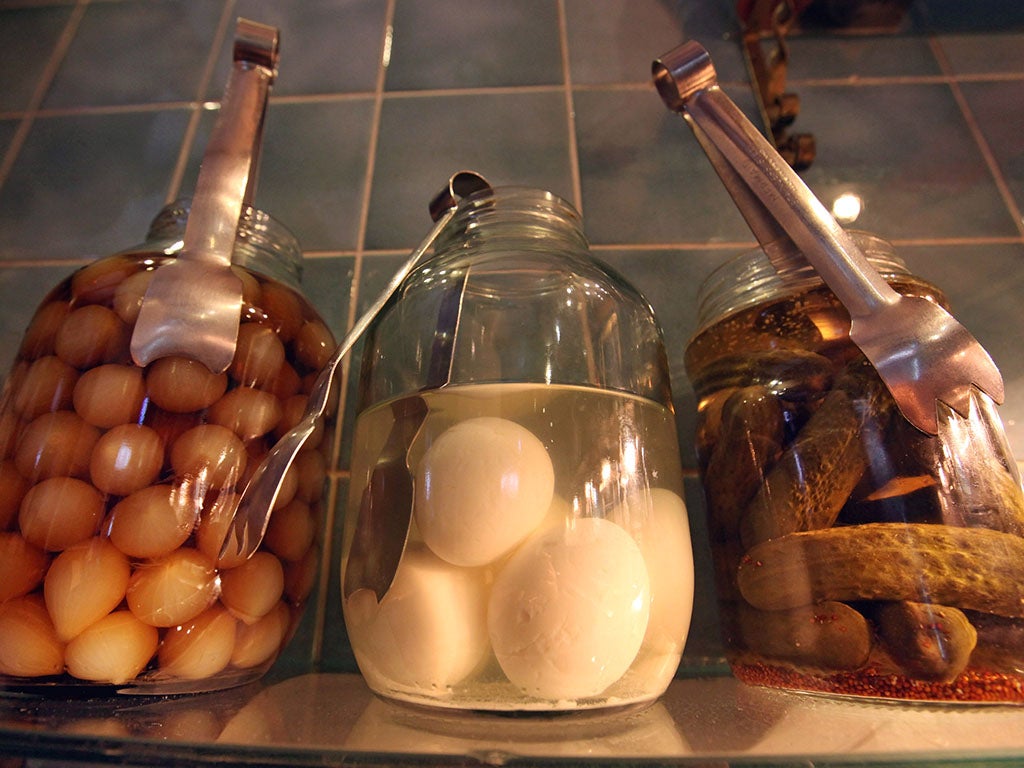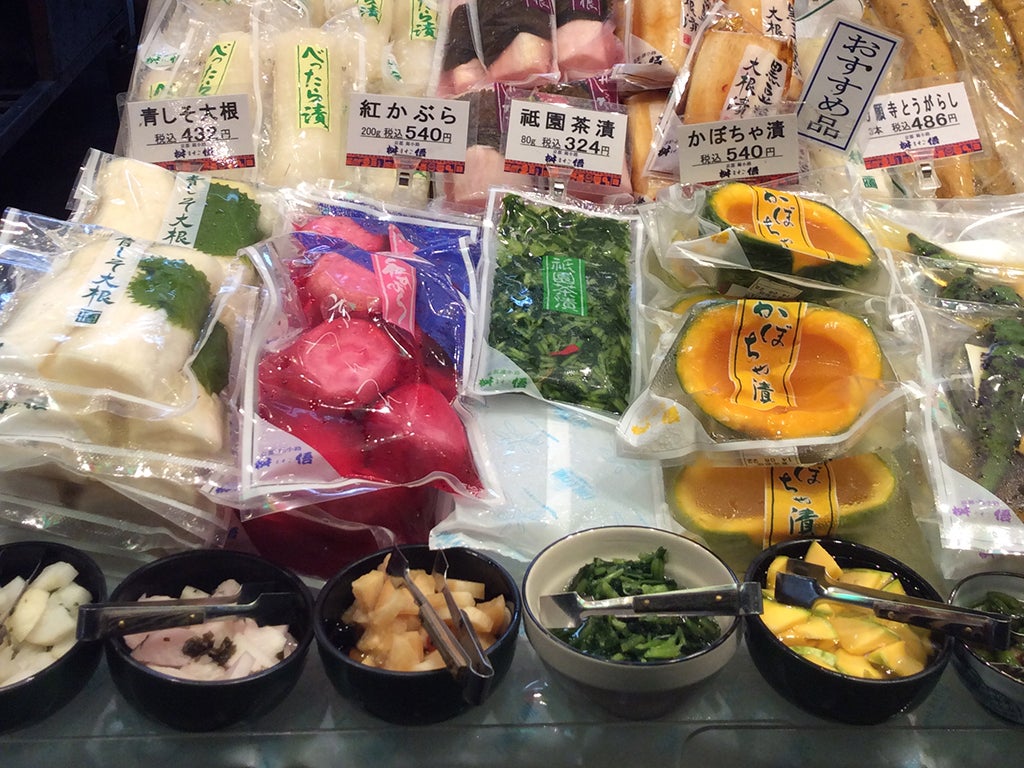Pickle treat: Fermenting food is in fashion
The majority of commercially fermented foods in supermarkets have been pasteurized, deliberately killing off the healthy micro-organisms that are present. Why not try it yourself at home?

Your support helps us to tell the story
From reproductive rights to climate change to Big Tech, The Independent is on the ground when the story is developing. Whether it's investigating the financials of Elon Musk's pro-Trump PAC or producing our latest documentary, 'The A Word', which shines a light on the American women fighting for reproductive rights, we know how important it is to parse out the facts from the messaging.
At such a critical moment in US history, we need reporters on the ground. Your donation allows us to keep sending journalists to speak to both sides of the story.
The Independent is trusted by Americans across the entire political spectrum. And unlike many other quality news outlets, we choose not to lock Americans out of our reporting and analysis with paywalls. We believe quality journalism should be available to everyone, paid for by those who can afford it.
Your support makes all the difference.Even for someone who does it for a living, baking seems like magic. A slurry of flour, fat and sugar turns into a sponge cake. An egg white becomes a lofty meringue. Croissants are, quite honestly, a buttery miracle. I probably don't need to tell you how good it feels to take a warm cake out of the oven. But I might have to try a little harder to explain the joy of opening a jar to find a bubbling ferment of bacteria.
I started fermenting food at home thanks to Sandor Ellix Katz, a thoughtful, moustachioed homesteader who has emerged at the forefront of a fermentation resurgence in the United States. It began with his recipe for carrot miso pickles. Then there was a jar of kombucha tea, tart and gently fizzy. And then some turnip sauerruben, which improves almost every sandwich immeasurably.
Fermented foods have a brilliantly complex taste, and the fermentation process itself is a kind of alchemy. Bread dough rises; sugars turn to alcohol; milk is transformed into yoghurt, or cheese; fresh vegetables become tangy pickles. And it requires so little effort - as anyone who’s had a bottle of wine turn to vinegar will know, it can happen without us even trying. You can think of it less as cooking and more as husbandry: when you ferment, you’re cultivating hundreds of thousands of tiny living creatures to produce your food.
Katz's books celebrate fermented foods not just as healthy and delicious, but also as a valuable part of our cultural heritage, and one that we’re in danger of losing. Once a vital way of making produce last, traditional fermentation processes have now fallen victim to mass-production. The overwhelming majority of commercially fermented foods in our supermarkets have been pasteurized, deliberately killing off the healthy micro-organisms that are present.
But in many parts of the world, fermented foods are very literally alive and well. Stopping off in Japan on a journey back to my childhood home in Australia, I was blown away by the variety of fermented vegetables on offer in the markets. Packets of sliced radishes and turnips in delicate brine; huge buckets containing whole aubergine, cabbages and cucumbers, covered in thick miso gunge or pungent sake lees; chilled pickles served on sticks as a crisp refreshment in the heat.

The Japanese tradition of fermentation is particularly rich and revered, but scratch the surface and you’ll find it in every culture. In Britain, you still find those tall jars of pickled eggs, pickled walnuts and pickled onions behind the bar in pubs – and there’s nowhere that takes more pride in local ales and beers. A Russian friend gave me her recipe for pickled mushrooms, delicately brined and flavoured with herbs. At my mother’s home in Melbourne, I’m busy pickling the glut of lemons from the tree in her yard.
I want to know what's fermenting in kitchens around London. This autumn, I'm hosting a pickle competition at the London Review Cake Shop. Anyone is welcome to bring along their entries on 5 November, and anything fermented is eligible, from pickles to home-made yoghurt to jars of hooch. The winner will get a copy of Sandor Ellix Katz’s cookbook, The Art of Fermentation.
Fermenting food is simple and satisfying. It’s also unpredictable, messy and sometimes utterly gross: jars will bubble over, there will be plenty of bacterial scunge, and occasionally you might end up growing a fluffy crop of mould. To tell the truth, this is part of the fun. It’s a process that puts you in touch with the world around you on a microbial level. It rewards experimentation. To paraphrase a question posed by Katz, are you ‘willing to collaborate with tiny beings with somewhat capricious habits and vast transformative powers’?
Fermented Ginger Beer recipe
To give you an idea of how easy it is to start fermenting, here’s the basic recipe for a naturally fizzy ginger beer. It’s fermented just enough to make it carbonated, but not enough to make it alcoholic.
You’ll need:
A piece of fresh ginger root
Sugar
Water
Fill a clean jar with water. Make sure you don’t fill it all the way to the top - the mixture will need space to bubble.
Add a tablespoon of sugar and a tablespoon of grated ginger root, then cover the top of the jar with cheesecloth to allow air to circulate. (A jar lid would also work, but make sure that it is screwed on loosely.)
Keep the jar on a countertop, and keep adding the same amount of sugar and ginger every few days until the mixture starts bubbling. This should happen within a week.
Once the mixture is active, it’s time to turn it into ginger beer! Strain the mixture, and add a couple litres of water and flavourings of your choice. A good way to get a more intense ginger flavour is to boil a large piece of ginger root with a cup of sugar to make a ginger syrup (you’ll need to make sure the syrup is completely cool before you add it to your ferment, or you’ll kill your hard-won microorganisms). Freshly squeezed lemon or lime will give the drink a citrus tang, and it’s delicious sweetened with honey.
Bottle your drink in sealable containers (old lemonade bottles are ideal) and put it in the fridge to chill. Your probiotic culture will stay alive at cooler temperatures, but the fermentation process will slow to a halt. If you want a stronger fermented taste, you can leave the mixture in a warm spot to bubble for up to two weeks longer. Be warned: ferments left to sit can get very fizzy, so take care opening the bottle!
Join our commenting forum
Join thought-provoking conversations, follow other Independent readers and see their replies
Comments